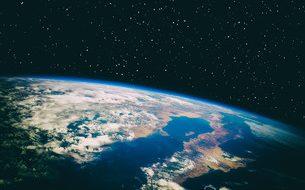NASA: Ozone Hole Is Now The Smallest On Record
Authored by Mac Slavo via SHTFplan.com,
NASA, the National Aeronautics and Space Administration, says that Earth’s ozone hole is now the smallest it’s been since it’s discovery. Abnormally warm weather patterns in the upper atmosphere over Antarctica dramatically limited ozone depletion in September and October 2019, resulting in the smallest ozone hole since 1982, NASA and NOAA scientists reported.
NASA says the hole is smaller due to a “rare event.” That rare event is warmer weather patterns in the upper atmosphere over Antarctica and we are constantly being told that warming is all man-made “climate change.”
“It’s a rare event that we’re still trying to understand,” said Susan Strahan, an atmospheric scientist.
“If the warming hadn’t happened, we’d likely be looking at a much more typical ozone hole.”
The ozone layer is approximately 7 to 25 miles above the Earth’s surface and acts as a “sunscreen” for the planet, NASA added. It keeps out harmful ultraviolet radiation from the Sun that has been linked to skin cancer, cataracts, immune system suppression and can also cause damage to plants.
The government agency said that the hole had shrunk to 3.9 million square miles for the remainder of September and October, according to satellite data. The peak in the hole was 6.3 million square miles, observed on Sept. 8. During normal weather conditions, the hole is usually around 8 million square miles during this time of year. -Fox News
“It’s great news for ozone in the Southern Hemisphere,” said Paul Newman, chief scientist for Earth Sciences at NASA’s Goddard Space Flight Center in a statement on NASA’s website.
“But it’s important to recognize that what we’re seeing this year is due to warmer stratospheric temperatures. It’s not a sign that atmospheric ozone is suddenly on a fast track to recovery.”
Experts tend to agree that the Antarctic ozone will recover back to levels seen in 1980 around 2070 thanks to the Montreal Protocol. The 1987 Montreal Protocol was enacted after scientists found a hole in the ozone over Antarctica and Australia in 1985. It was enacted by the United Nations Environment Program. Former U.N. Secretary-General Kofi Annan said it was “[p]erhaps the single most successful international agreement to date” and it has been widely regarded as successful, with the ozone continuing to recover each year.
Tyler Durden
Wed, 10/23/2019 – 17:50
via ZeroHedge News https://ift.tt/2MFLzAS Tyler Durden
